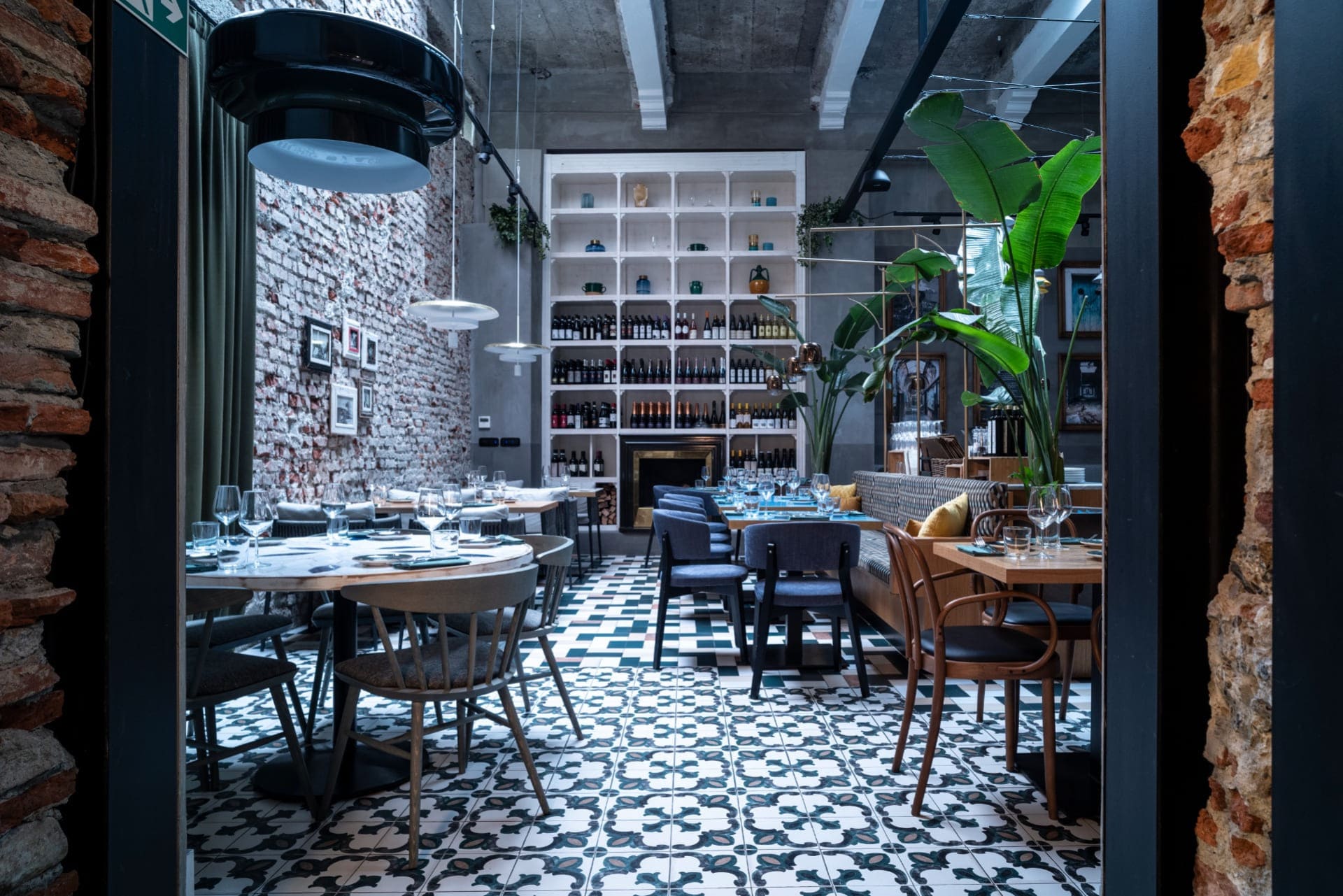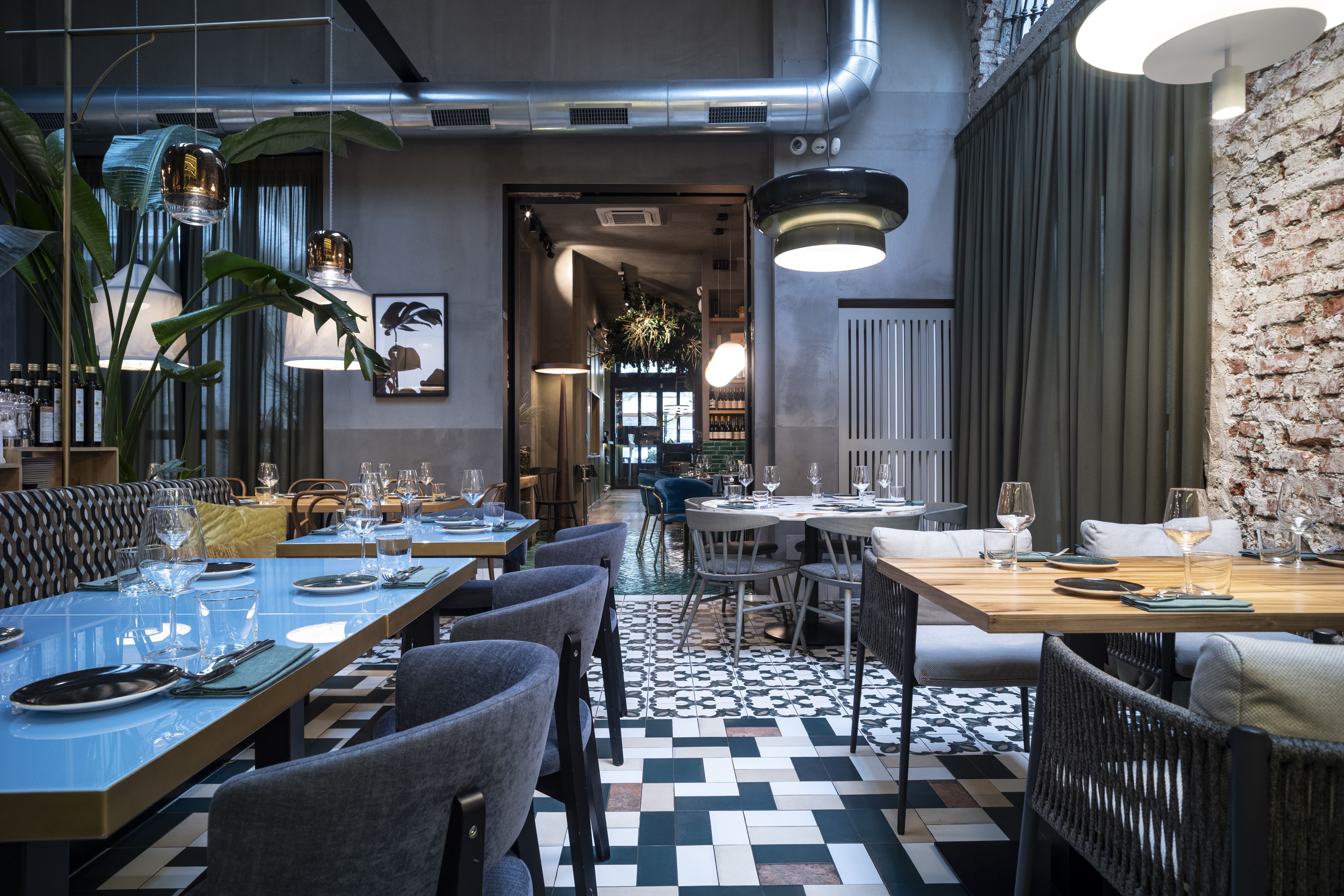Coming to the specifics of the project, the new restaurant had to represent for the group an evolution of the previous concepts, enriched with the inclusion of a bio-cocktail bar to give that touch of typically Milanese aperitif and after-dinner moments. The ultimate goal was to satisfy a wider audience and reach new market segments. The challenge of MGAlab was to bet on a “reversed” design model. Indeed, both the kitchen and the pizza oven are open plan and all visual barriers between the restaurant hall, the kitchen and the lounge have been removed.
Proceeding past the kitchen, one finds himself in the hall, which is defined by high ceilings, red brick walls and an exposed attic. These so to speak “rough” features stand in harmonious contrast with the furniture. This latter, indeed, presents a warm and familiar design, as exemplified by the large wooden library used as a wine cellar and the fireplace in brass finish. The tables constitute an additional element of dialogue with the customers. Designed in different materials, we find them in marble, handmade majolica, back lacquered glass or wood, all never covered by tablecloths. Regarding the chairs, Elitis coloured fabrics in harmony with the colour palette of the building materials were chosen for the sofas. This attitude, which Giovanni Musica defines as “democratic”, allows the client to choose where to sit according to his needs.
Equally important was the choice of technical and decorative lights, all coming from Marset Lighting. Given the height of the ceilings, the main need was to properly illuminate the tables. In order to ensure a certain flexibility in the movement of the tables, the interiors were provided with an essential technical lighting that enhanced the property and a design lighting attentive to the customer and the tables. Therefore, on the left side, where the tables are immovable, MGAlab wanted to punctually illuminate the tables by inserting different types of lamps of different materials and colours, so as to define a scenography, while in the right side the lamps were inserted on steel cables so that they could slide according to the arrangement of the tables.




